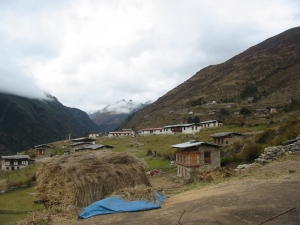 When I first arrived in Bhutan, I was invited to help the government’s Department of Information demonstrate the power of technology in an effort to get more government funding. We mocked up a distance education system using the two Polycom systems that were in the country at the time. The teacher stood in one room and drew on the blackboard as he spoke. The students sat in an adjacent room taking notes and asking questions through the VC.
When I first arrived in Bhutan, I was invited to help the government’s Department of Information demonstrate the power of technology in an effort to get more government funding. We mocked up a distance education system using the two Polycom systems that were in the country at the time. The teacher stood in one room and drew on the blackboard as he spoke. The students sat in an adjacent room taking notes and asking questions through the VC.
The idea was extremely ambitious because at the time, Bhutan had virtually no wide area network. The mountainous terrain and the shear distances ruled out wired connections. The villages that most needed distance education were days walk from any road and had no electricity. That changed while I was there, with phone lines and solar powered e-centres being installed in a few places, and full data links for the ten major government offices, but they were still a long way from having the bandwidth to schools.
Today, I see that Ericsson have begun work with Bhutan’s education department to install videoconferencing into five remote schools so their students can take lessons from a central group of specialists. I’m excited to see that Bhutan has overcome the geographical problems and is now in a position to make this work. Instead of getting the lowest skilled teachers, who couldn’t get better placements, these students will now have access to the same quality teachers as the students in the capital. I’m looking forward to seeing this rolled out to the rest of the country in coming years.